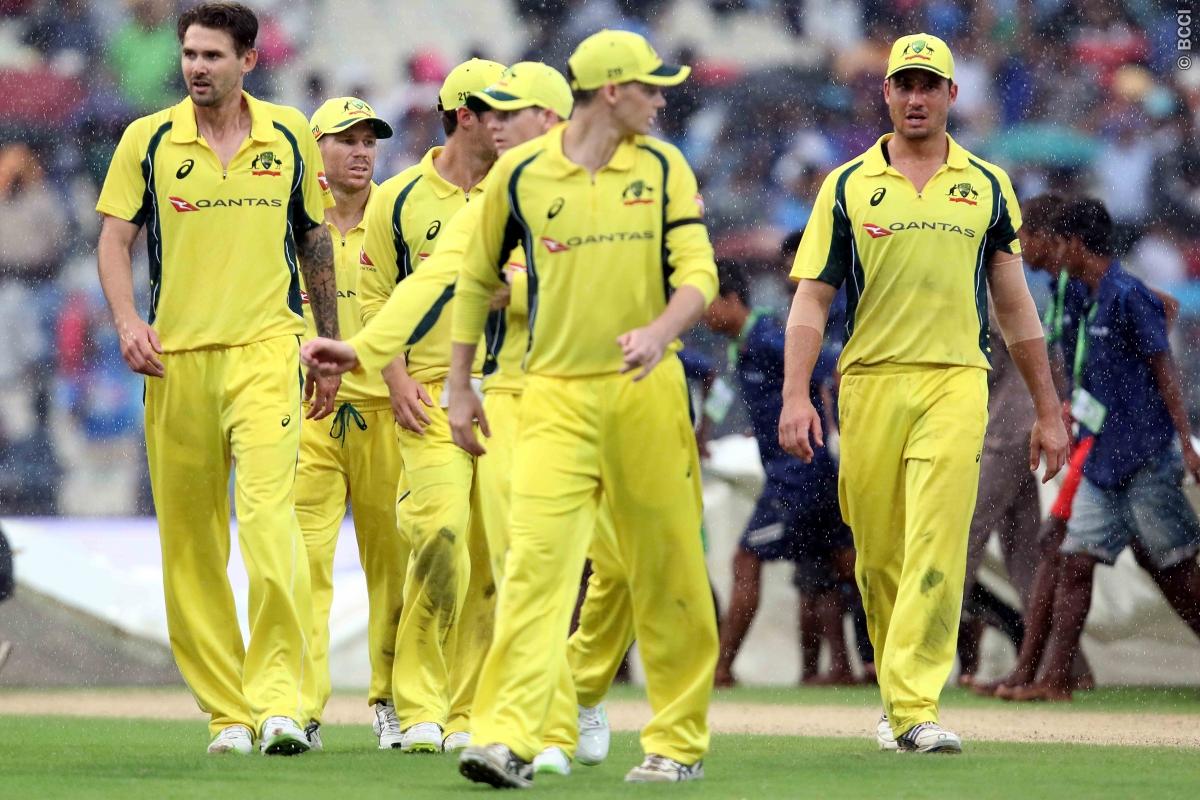India are out of the loop of randomness, Australia next in line
When India and Australia played England in the 2019 Cricket World Cup, the stage was set for both of them to show their dominance against the host-nation. However, the domination never arrived but what arrived would dominate the next half of their ODI year, ‘loop of randomness.’

As Professor Charles Seife put its down, we as humans have evolved as a species to become exquisite patter-finders. While it all started way before the advent of science, the emergence of it does not hinder the pattern-seeking humans. And, another pattern that I managed to stumble upon, Indian and Australian cricket team’s ‘loop of randomness.’ It all started with their clash against England. While India and Virat Kohli faced them in the group stage, their Australian counter-parts found it tough facing them in the semi-finals. One thing that both teams across continents had in common - an ‘L’ against the English side, who never looked like stepping down from the peddle.
And then, started the rigorous, the mysterious spell for both sides. India had their first ODI assignment against West Indies relatively sooner, where he went back to Kedhar Jadavs, Kuldeep Yadavs after dropping them in the World Cup. That also meant Vijay Shankar and Dinesh Karthik were out of the squad that faced the Windies side away from home. This is exactly where it all started for the Indian team, the ‘big-bang.’ Sooner or later, they went back around multiple faces, a million time before finalising on some of the positions. While the loop surrounded several faces, there were five - Kuldeep Yadav, Kedhar Jadhav, Ravindra Jadeja, Manish Pandey and Rishabh Pant. These five arguably help more prominence in Indian history than even the ‘panch-Pandavas.’
An ODI series repeat against West Indies, this time was a perfect opportunity for the management to try out a different set of players. Thus, KL Rahul opened the batting alongside Rohit Sharma and he immediately failed. But, worry not, cause India are not going to get him away from the setup after just one game. It was a Pant-Iyer special at Chepauk which propelled India to a good total, however, not good enough on the night. While the role of Jadeja was pretty clear from the beginning - containing runs and applying pressure. Yadav went missing big time, with the West Indies batsmen getting hang of him. And then the hattrick happened, which made India even more confused on who to pick for the Australia tour.
It is when the best of both worlds, the best of randomness met. In the series, Australia kept the troubled-trio of Peter Handscomb, Ashton Agar and Ashton Turner in the squad while India continued to put their trust on KL Rahul, Kuldeep and Pant. While slowly yet steadily Rahul moved ranks up, Kuldeep and Pant found it tough battling ‘muddy’ water, one which required their best of skills. Pant, unlucky after being hit on the head by Pat Cummins missed the second half of the innings - which also was the end of him behind the stumps. And, that incidentally kicked off Rahul’s second innings with the Indian team. Not only did he don the ‘holy’ gloves but also quickly became India’s best player. Meanwhile, Australia failed to pick up their game from where they left in the World Cup.
While they did win the first one, rather in a relatively quick time, from there on, the series was a stretch. One that was painstakingly difficult to watch as an Australian fan, with the team’s middle-order the weakest ever since I started watching cricket. To add more context, I’m 21 and the middle order was led by Ricky Ponting then. Now it is Steve Smith and Marnus Labuschagne, alongside Alex Carey and Ashton Turner. Imagine coming to India with just five specialist batsmen, well that already reads ‘warning’ all over it. That was exactly what it was, a tough pill to swallow. Naturally, they failed with that line-up while Glenn Maxwell was tonking bowlers for fun. Next up, it was South Africa, another rival that has had a stinging effect on the Australian team.
Just a few weeks before the tournament, news comes in that the now-picked Maxwell was ruled out due to an operation. Well, then it was a haunting dream that came back, that the middle order once again going to give nightmare to the Australian fans? No pits, Sherlock! That is exactly how the next month, the series against South Africa went. D’Arcy Short replaced Maxwell, as a like-to-like replacement as he could roll up his sleeve now and then, an ailing middle order following a long-long tiring set of three months. Mitchell Marsh too made it to the playing XI alongside vice-captain Alex Carey.
In the T20 series earlier, it is worth noting that Australia had shuffled their order so much that it looked like Pep Guardiola trying to use his first-choice goalkeeper Manuel Neuer in the middle of the park. Such was Justin Langer and his innovative batting idealogy, with Matthew Wade, Marsh playing ahead of Smith. Smith then walked in with Carey following him down the order. Okay wait, hold on, isn’t Marsh supposed to be a finisher? Anyway, the positions are so tangled, it was rather difficult to find out whether they were the pair of earphones that was in my pocket or the Australian team.
If you were a growing fan of the Australian team in the 2000s’ you would remember the glorious time of having a middle-order that ended with a finisher named ‘Michael Bevan,’ such were Australia. Now, we are reduced to the muddled middle-order and rather a hunky-punky approach to the batting order. Going into the ODI series, they did not have one thing set - oh they did have their opening partnership set, by let us keep that aside for now. The dual-purpose of Short, either as a top-order batsman coming as a replacement for either of Finch or Warner or Short as a finisher alongside being a bowler.
Imagine Adam Gilchrist playing below the likes, of say, a Jason Gillespie or a bowling all-rounder, wouldn’t it rather be nasty to the man himself? That is exactly how Carey must and should feeling right now after his demotion lower and lower down the middle-order. If you are taking that road, why not play a specialist batsman ahead of him instead of the all-rounders. And to top it all of, Josh Hazlewood miraculously only appears in a series finale, here a dead rubber. After the series was out of grabs, with Starc on the flight back to Australia - the management decided to go back to Hazlewood, the man who arguably was one of the best bowlers in the series. Mind me, he only played ONE game in South Africa in the series.
Also, intriguingly, he only played the series finale against India. Well, when he is, of course, one of the better-suited bowlers to the conditions, why not him being the first name on the list? The other point of view being Australia were using the ODI series as a white-board ahead of the T20 World Cup. Well, fair enough, then should you not be trying out D’Arcy and Carey higher up in the order. Another name which comes at the top of any Aussie fan’s head - Marcus Peter Stoinis. Okay, he has been away from the ODI side for as long as say, Indian summers, English winter, well in short - eight months. And, since then, he has been a converted opener and yet when an opener goes out of the park, they would more than certainly pick Short.
With the bowling unit, should you then be really going with Mitchell Starc in the series if experimentation is the game? Well, the game is as ‘marred’ as word randomness, and if that is the way to go, then even the ‘home’ World Cup will not likely be of any use. And, it all started, against Australia’s eternal-rivals England, one who had not only beat them in the semi-finals but also have now beaten them mentally. When I woke up the following day, I was still unsure whether it was the ‘nightmare,’ or just another day for a modern-day Australian fan.

Comments
Sign up or log in to your account to leave comments and reactions
0 Comments